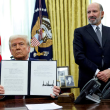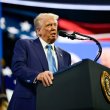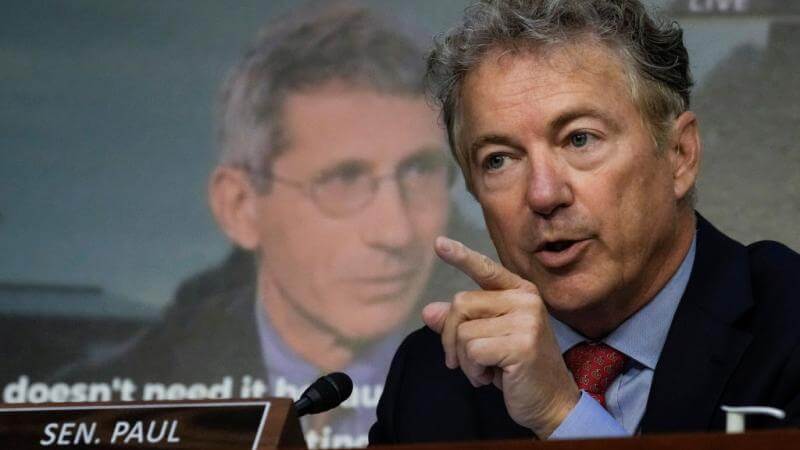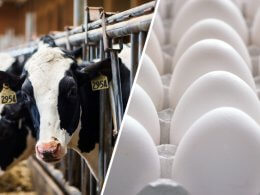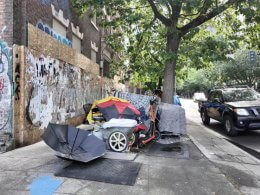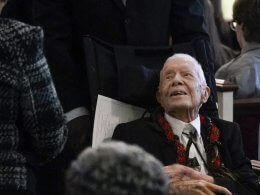The best-case scenario for one of the most common COVID-19 interventions may be that it has no measurable effect on infection, recent studies suggest.
A systematic review of studies of mask mandates for children, published Saturday in the British Medical Journal's Archives of Disease in Childhood, found "no association" with infection or transmission in 16 of the 22 observational studies and "critical" or "serious" risk of bias in the six countervailing studies. It got the attention of Elon Musk, owner of X, formerly Twitter.
Self-reported SARS-CoV-2 infection was higher the more often people said they wore masks, according to a Norwegian study accepted for publication Nov. 13 in the Cambridge University Press journal Epidemiology and Infection.
The findings cast further doubt on the practice of not only public health authorities but scientists themselves in demonizing science-based skepticism of the effectiveness of COVID interventions, particularly in relation to their potential medical, mental and social harms.
Emails turned over under public records requests show that National Institutes of Health officials were privately questioning the effectiveness of cloth masks and forthcoming vaccines just a month after then-NIH Director Francis Collins appeared to plot with colleagues to organize a "quick and devastating take down" of the anti-lockdown Great Barrington Declaration.
Sen. Rand Paul accused YouTube of censoring him twice the following summer, and becoming "an arm of the government," when the Kentucky Republican challenged the effectiveness of cloth masks, which the CDC portrayed as comparable to higher-quality masks until early 2022 – months after a Bangladeshi randomized controlled trial frowned on cloth.
An analysis published in the Proceedings of the National Academy of Sciences on Nov. 20 suggests that "scientific censorship is often driven by scientists" and not just "authoritarian officials with dark motives, such as dogmatism and intolerance," as popularly believed.
The paper, co-authored by dozens of scholars known for challenging orthodoxies in their fields, cited "self-protection, benevolence toward peer scholars, and prosocial concerns for the well-being of human social groups" as motives for censorious scientists.
Heterodox COVID scholarship may suffer hard-to-prove "camouflaged censorship" by way of "double standards" applied to such research, the paper states.
Co-authors Cory Clark, of the University of Pennsylvania, and Musa al-Gharbi, of Stony Brook University, also mentioned COVID censorship in a Chronicle of Higher Education essay on the paper.
University of California San Francisco, Stanford, U.K. Health Security Agency and independent scholars reviewed the child mask-mandate studies. One of them, UCSF's Tracy Beth Hoeg, is known for a 2021 study for the Centers for Disease Control and Prevention that found lower COVID infection rates in schools than the surrounding community.
"Masking recommendations appear to be entirely based on mechanistic and observational data," they wrote, noting that a much broader systematic review of mask RCTs by the research collaborative Cochrane concluded masks make "little to no difference" against flu or COVID.
(Cochrane unilaterally reinterpreted the study to downplay its findings, over the authors' objections, after facing media scrutiny.)
The six studies that found lower infection with mandates, or a negative association, were "potentially confounded by crucial differences between masked and unmasked groups," such as how many days students were in school, size of schools, testing and contact-tracing policies and "baseline differences in case rates in all phases of the pandemic."
The statistical significance of results in two studies disappeared when the authors re-analyzed them, according to the paper.
A Boston-area study that received glowing media coverage despite widespread criticisms of its methodology, for example, "failed to find the same association when expanding the population to include the entire state or using different statistical analysis and also found the initial study’s results were likely confounded by differences in prior infection rates."
Because the authors concluded the benefits of masking "have not been identified" and children are "vulnerable and an ethically protected group," healthcare providers and adults working with children should be informed of this "absence of high-quality data" and reject this medical intervention for their demographic, the paper also states.
"Hope MDs and public health officials will always be willing to change minds with evidence & data," UCSF's Monica Gandhi, who was not involved in the review, wrote on X. "Facts can be so inconvenient," Musk replied to her, while COVID analyst Justin Hart referred to his litigation against social media companies and the feds for allegedly colluding to censor his similar claims.
"We were right," Sen. Eric Schmitt, R-Mo., wrote on X, pointing to a September 2021 Atlantic profile of his Senate campaign as the "anti-mandate attorney general." He showed a screenshot of its original headline: "The Unmasked Avenger of Missouri."
The Norwegian study used "cross-sectional data from 3,209 participants in a randomized trial of using glasses to reduce the risk of infection," which had taken place in early 2022.
The researchers then redistributed them into three groups "based on their retrospective report of the level of face mask use during the study period" – "often [50-75% of the time] or sometimes [25-50%]," "almost always [75%] or always," and "never or almost never [up to 25%]."
While both at-home antigen tests and more rigorous PCR testing outside the home were "widely and freely available" to the population during the study period, only PCR tests are "universally registered in the national surveillance system," so the authors relied on self-reported positives in 1-17 days of the study period.
They were 40% higher in the "almost always or always" group, and 33% higher in the "often or sometimes" group, compared to the "never or almost never" group.
While the authors noted several limitations – including official mask guidance changing during the study and possible "reverse causality" in which people who test positive are more likely to mask going forward – they said they controlled for variables "available to us," including vaccination status.
The authors theorized "unobservable and hence nonadjustable differences between those wearing and not wearing a mask" were responsible for the substantial differences in self-reported infection rates.
"Recommendations to wear face masks in the community are largely informed by low certainty evidence from observational studies," the paper concluded. "More randomized trials or quasi-experimental studies are needed to improve our insights" on masks and respiratory infections.
Related Story: Giant Grift: Biden Administration Has Only Recovered a Few of the $280 Billion in Stolen COVID Aid



